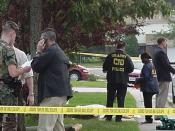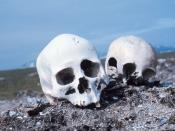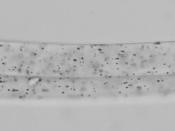One of the most essential part of crime scene investigation are the part of a criminalist. He is a partner of an investigation process that finds bits and pieces that even some investigators don't see. Crime scene personnel can encounter blood evidence in many types of cases, including burglaries and other non-violent crimes, but it is most often encountered in crimes of violence such as homicide, assault, and sexual assault. Bloodstain patterns are one of the most intriguing parts of forensic science that has become more recognized today as not just a science but an art as well. The examination of blood provides invaluable information to the forensic scientist in many areas of criminal investigation. It determines whether or not if this was a violent crime, accident, suicide, or natural death.
Blood is the most significant and frequently encountered types of physical evidence associated with forensic investigation of death and violent crimes.
Crime scene reconstruction demands that we evaluate all physical and testimonial evidence to derive some conclusions as to what occurred. The goal of bloodstain interpretation is to reconstruct the crime scene utilizing the bloodstain patterns in answering our questions whether the crime, which was committed, was violent in assisting in forensic investigations. For homicide investigations, case resolution hinges on "careful and intelligent examination of the scene". The nature of the blood spatter determines whether or not this was a violent crime and helps the investigator in reconstructing the crime scene. (Bevel, 2000)
Throughout history, bloodstain patterns were not appreciated as a forensic skill in determining how a crime was committed and with what weapon. The first study in blood interpretation was documented by Dr. Eduard Piotrowski in Poland. His work led this art of work into a more useful skill in crime scene investigation and later was introduced...



Excellent
This is exactly what i was looking for; a very thorough essay well explained.
0 out of 0 people found this comment useful.